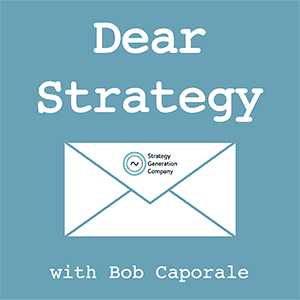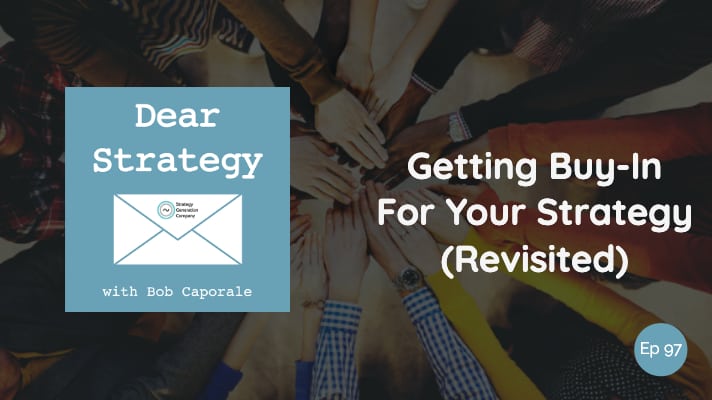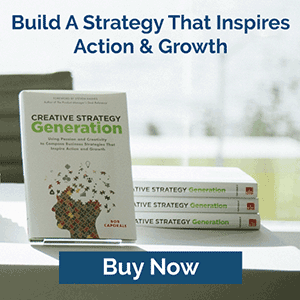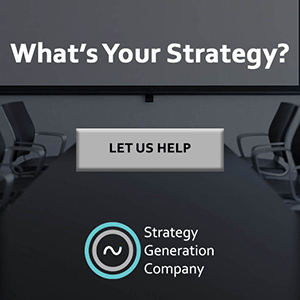Dear Strategy:
“What is the best way to get continued buy-in for my strategy and ensure the organization remembers and ties their work back to the strategy?”
AND
“What are some methods to gain buy-in from the bottom-level up in an organization that is not structured as a product/service organization?”
In our last blog post, I promised that I would talk more about the subject of getting buy-in for your strategy in a later post. But even I didn’t know that I would get to it this quickly!
In any case, here we are with two questions about how to get buy-in for your strategy. And, at least in my mind, these two main questions hit on 4 different sub-questions that are all centered on this same topic. They are:
- How do you get buy-in for your strategy?
- How do you ensure the buy-in sticks within your organization?
- How do you ensure the buy-in is not only “top-down,” but is also “bottom-up?”
- How do you get buy-in if you’re not structured as a traditional product or service organization?
Let’s take each of these questions one at a time:
How do you get buy-in for your strategy?
All the way back in Episode 37, I addressed this question more from the standpoint of getting buy-in for your strategic vision. And, the gist of that answer had to do with making sure your vision is focused on helping your customers rather than on just helping your company. Doing that should give you a built-in level of buy-in inside your company because, as the theory goes, your customers should serve as a central focal point around which everyone will automatically want to rally. That answer, of course, still stands. But, for the purposes of this particular version of the question, I want to add that, in addition to focusing your vision firmly on your customers, you should also try to proactively involve as many internal stakeholders in the initial planning stages of your strategy as you possibly can.
Strategic planning is meant to be a collaborative process by design – 1) because you need to draw upon as much knowledge as possible in order to make informed decisions, and; 2) because the more people you involve, the more support you will ultimately receive for your plan. Of course, that’s not to say that everyone’s input is automatically going to make the final cut. But the more you can demonstrate that you did your homework and involved as many of your stakeholders as possible in the development process, the more credibility and support your plan is ultimately going to get on the back end of the execution process.
How do you ensure the buy-in sticks within your organization?
In our last post, we focused on the importance of communicating your strategy to everyone that is likely to be involved in helping you execute it. That’s certainly one of the keys to obtaining buy-in. But to make sure that buy-in actually sticks, you’re also going to have to communicate your strategy in as many ways and over as many times as possible. That could mean using email blasts, video shorts, promotions, contests, incentives, or other forms of repetitive “advertising” that you might not traditionally associate with getting the word out about your strategy. In short, if you really want the buy-in for your strategy to stick past your first meeting, you’re going to have to think not only as a strategist, but also as a marketer.
“If you really want the buy-in for your strategy to stick past your first meeting, you’re going to have to think not only as a strategist, but also as a marketer.”
How do you ensure the buy-in is not only “top-down,” but is also “bottom-up?”
Frequent communication of your strategy will help you get buy-in that sticks, but the actual message embedded in that communication is what will ultimately allow your strategy to resonate throughout all levels of your organization. And, ideally, that message needs to be focused on letting your audience know exactly what’s in it for them.
How will your strategy help them personally? How exactly will they be involved? And, tying back to our first question, which of their main influencers were involved in helping you develop your strategy? There’s no better way of getting bottom-up buy-in for your strategy than by letting your audience know that they were fully represented during the development stage. Mentioning that little fact will not only give your strategy instant credibility, it will also give your strategy long-lasting loyalty and support.
How do you get buy-in if you’re not structured as a traditional product or service organization?
I have to admit, this part of the question had me a bit baffled at first. I mean, every company that I can think of (even non-profits) are in business to provide some type of product, some type of service, or some type of both. So, whatever could this reader be referring to?
My assumption is that the company in question is, in fact, a product or service company, but is organized internally by something other than the products or services that it supplies. A common version of this might involve a company that is structured by the industry verticals that it serves (oil and gas, pulp and paper, food and beverage, etc.) rather than by the products that it sells into those industry verticals. This adds a little more complexity to the strategy development process because now, instead of there being two layers of strategies (business and product), there are actually 3 layers (business, product, and market) – two of which sit on the same level.
Confused? Don’t be – because I promise that I’ll cover this scenario in a future post. But, suffice it to say, for the purposes of obtaining buy-in, if you are structured primarily by market, then, in addition to communicating your strategy in all the ways we talked about above, you also need to make sure that people within your organization understand exactly how your product strategies and your market strategies are going to work together to help you achieve whatever results you’re trying to achieve.
And that should be that. Collaborate, Communicate, Connect, and Clarify – follow these “Four Cs” and you’ll get all the buy-in you could ever want.
Wow – spoken like a true consultant! I think I may just feel another book coming on…
Listen to the podcast episode
Dear Strategy: Episode 097

###
Are you interested in strategy workshops for your product, marketing, or business managers? If so, please be sure to visit Strategy Generation Company by clicking the link below:
 Bob Caporale is the founder of Strategy Generation Company, the author of Creative Strategy Generation and the host of the Dear Strategy podcast. You can learn more about his work by visiting bobcaporale.com.
Bob Caporale is the founder of Strategy Generation Company, the author of Creative Strategy Generation and the host of the Dear Strategy podcast. You can learn more about his work by visiting bobcaporale.com.







